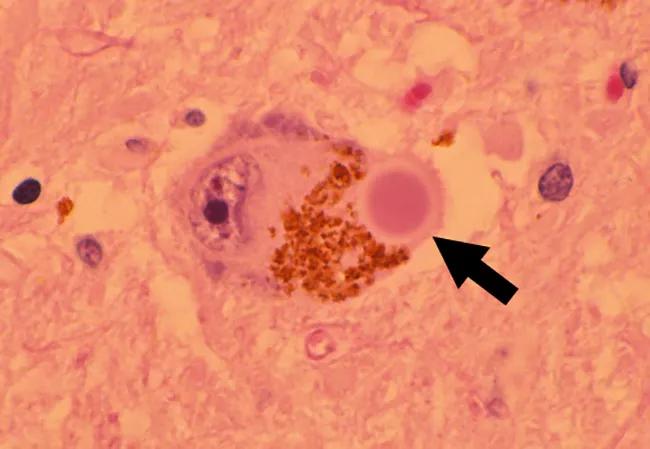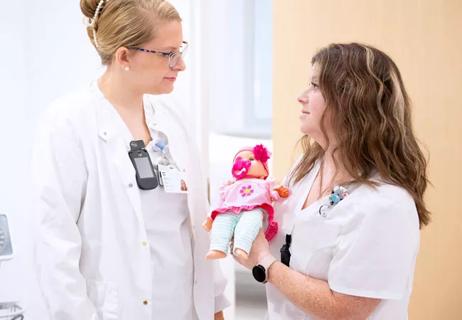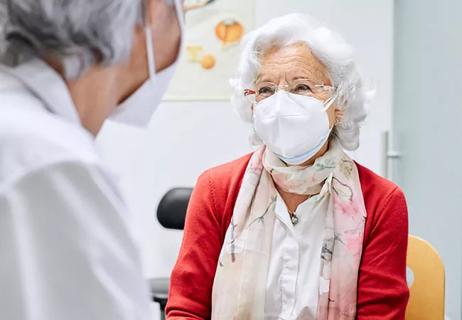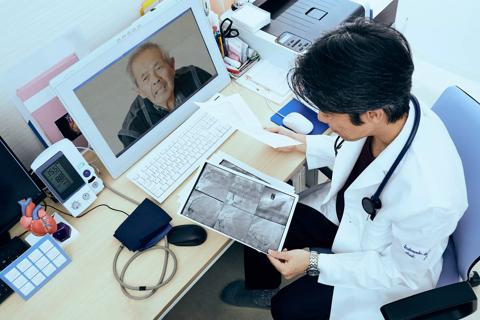Cleveland Clinic leads effort to emulate models for Alzheimer’s and Parkinson’s
By James Leverenz, MD, and Babak Tousi, MD
Cleveland Clinic is a non-profit academic medical center. Advertising on our site helps support our mission. We do not endorse non-Cleveland Clinic products or services. Policy
In neurodegenerative disease, strength seems to lie in numbers. Understanding of both Alzheimer’s disease (AD) and Parkinson’s disease (PD) has benefited substantially from large consortia that have advanced research by harnessing the strengths of multiple academic centers to combine efforts, pool data and develop standardized approaches.
It is well past time to apply the same strategy to dementia with Lewy bodies (DLB), and Cleveland Clinic Lou Ruvo Center for Brain Health is proud to be the coordinating site for the newly formed nine-center Dementia with Lewy Bodies Consortium, funded by a $6 million, five-year grant from the National Institutes of Health (NIH). This article briefly reviews the rationale for and objectives of this first-of-its-kind U.S. research consortium in DLB, along with some of its early initiatives.
DLB is the second most common form of neurodegenerative dementia in the elderly, although it is likely underdiagnosed, as its symptoms can closely resemble those of AD and PD. This contributes to the condition’s notoriously difficult diagnosis.

Lewy body inclusion (arrow) in a pigmented neuron of the substantia nigra.
Diagnostic challenges, as well as the current absence of therapies, even for symptomatic management, stem in large part from a dearth of biomarkers for DLB. Impediments to biomarker development have included small subject numbers, a lack of systematic patient characterization and an absence of consistent longitudinal follow-up with autopsy.
These traditional impediments are the main raisons d’être of the national DLB Consortium, which has been established with the following primary objectives:
The expectation is that the DLB Consortium will provide the foundation for a wide range of investigations into the future.
The consortium will support and facilitate collection of clinical data through systematic patient assessments compatible with AD and PD programs, brain imaging studies (MRI and SPECT) and collection of biospecimens (blood and cerebrospinal fluid) from more than 200 individuals with DLB across the nine participating sites. Autopsy will also be offered in some cases. The aim is to create the foundation needed for biomarker development.
The consortium serves to formalize and strengthen already existing collaboration among the participating centers, all of which have expertise in Lewy body disorders. In addition to Cleveland Clinic, the centers are Florida Atlantic University, Rush University, Thomas Jefferson University, University of California San Diego, University of North Carolina, University of Pennsylvania, University of Pittsburgh and VA Puget Sound Health Care Center/University of Washington. The consortium will further collaborate with the National Institute of Neurological Disorders and Stroke and the National Institute on Aging.
In addition to the five-year NIH grant, the consortium has received funding from the Lewy Body Dementia Association to convene an annual meeting of investigators, the first of which was held in February 2017, to develop study protocols and promote data sharing, collaboration and discovery in DLB. GE Healthcare has also provided a grant to support the cost of dopamine imaging (DaTscan™) performed on study subjects.
Investigators in Cleveland Clinic Lou Ruvo Center for Brain Health are excited to align our leadership in the national DLB Consortium with our participation in the first U.S. clinical trials designed to test investigational therapies for DLB. These studies are outlined below.
HEADWAY-DLB study of intepirdine (RVT-101). Intepirdine (RVT-101) is a small-molecule 5-HT6 receptor antagonist that has been shown to raise levels of acetylcholine. In January 2016, the phase 2 HEADWAY-DLB study began enrolling an anticipated 240 patients with DLB to compare six-month courses of intepirdine (35 or 70 mg orally once daily) or placebo for effect on the Clinician’s Interview-Based Impression of Change Plus Caregiver Input (CIBIC+) rating and performance on a computerized cognitive battery. Secondary end points include visual hallucinations and safety measures. The randomized, double-blind trial completed recruitment in April 2017 and is offering a six-month extension to completers.
Two studies of nelotanserin for DLB symptoms. Nelotanserin is a selective inverse agonist of the 5-HT2A receptor that has shown promise in calming neuropsychiatric disturbances seen with DLB, including visual hallucinations and sleep disturbances. It is now being investigated in two phase 2 randomized, double-blind, placebo-controlled studies focused on these symptoms.
One study, launched in late 2015, is using a crossover design to compare 28 days of nelotanserin 20 mg orally once daily with placebo among patients with Lewy body dementia who experience frequent visual hallucinations. Outcomes of interest are safety, extrapyramidal signs as assessed by the Unified Parkinson’s Disease Rating Scale motor subsection and change in the frequency and severity of visual hallucinations. Target enrollment of 30 participants was achieved in summer 2017, and completion is expected by the end of 2017.
The second study, launched in early 2016, is comparing 28 days of nelotanserin 20 mg orally once daily with placebo among an anticipated 60 subjects with DLB or PD dementia who have REM sleep behavior disorder. End points are safety and changes in the frequency and proportion of severe REM sleep behaviors based on clinical evaluation. Completion is expected by the end of 2017. Participation at our institution is being done in collaboration with colleagues in Cleveland Clinic’s Sleep Disorders Center.
With further guidance on disease markers expected from the ongoing NIH-funded DLB Consortium biomarker study, we are hopeful that these are just the first in a wave of DLB therapeutic studies in the years ahead.
Dr. Leverenz is Director of Cleveland Clinic Lou Ruvo Center for Brain Health, Cleveland, and principal investigator of the NIH grant for the DLB Consortium.
Dr. Tousi is Head of the Clinical Trials Program at Lou Ruvo Center for Brain Health, Cleveland.

Pilot study confirms feasibility of conducting additional research on the novel treatment

Longer hospitalization does not mean a safer, faster recovery for patients age 70+

Structured data helps identify older adults at risk for poor outcomes, defines patients who require more comprehensive assessments

Self-administered tool can be completed in 10 minutes in waiting room

Social prescribing turns leisure activities into good “medicine”

A large geriatric study aims to find the answers

Analysis underscores how telehealth can help pinpoint elder abuse